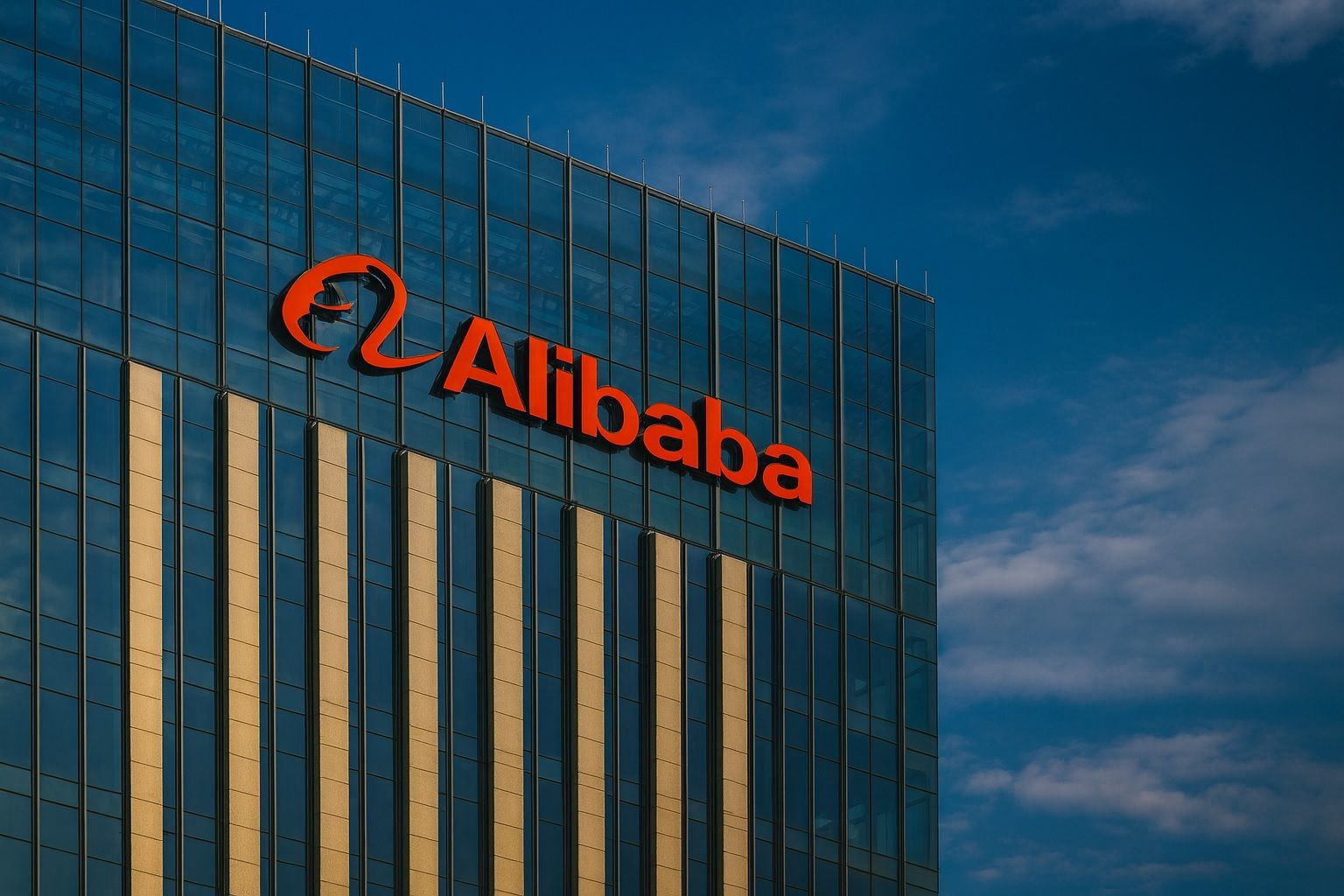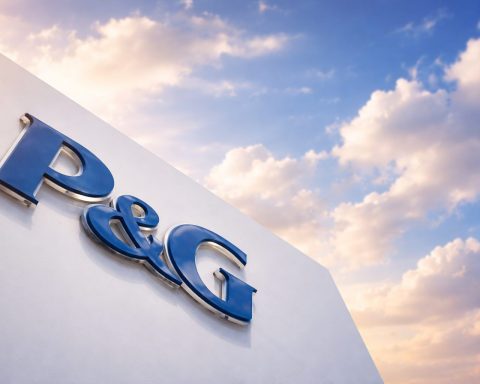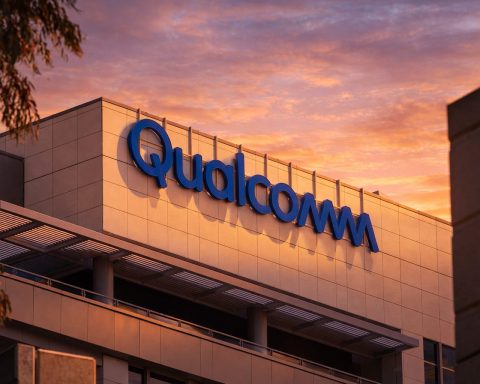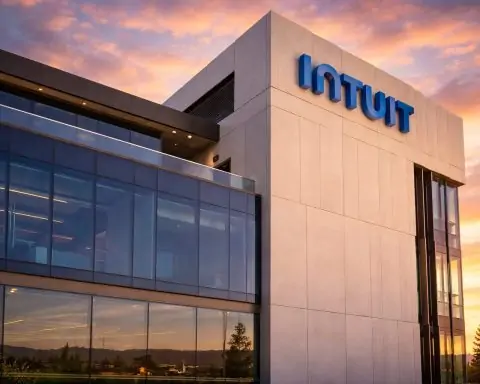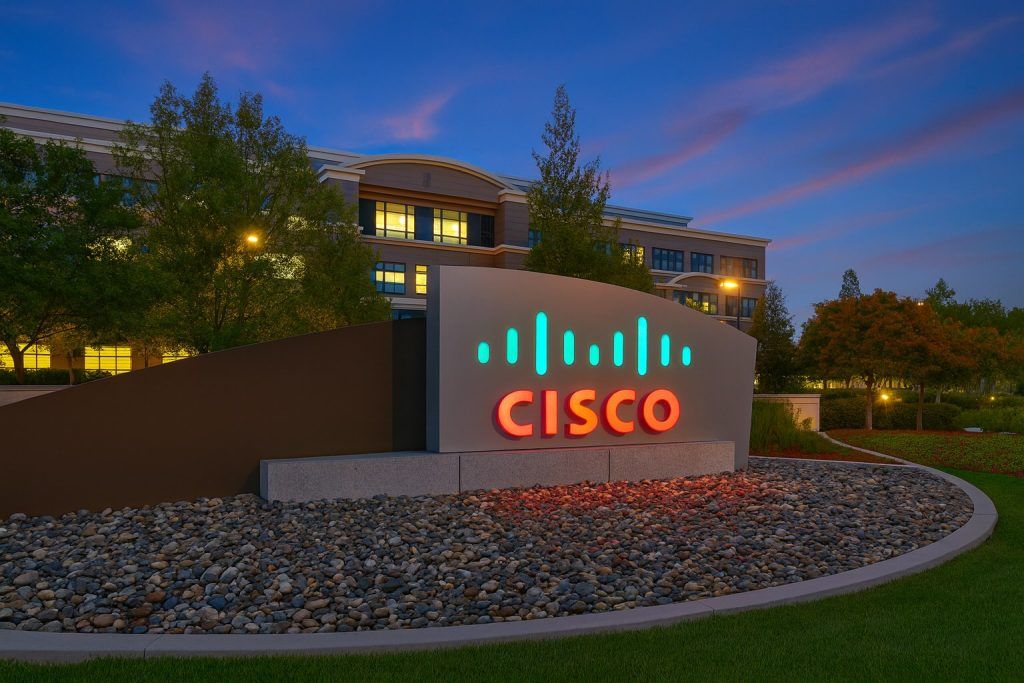- BABA Stock Surges to Multi-Year Highs: Alibaba’s U.S. shares (NYSE: BABA) have roughly doubled in 2025, recently hitting the mid-$170s – a four-year high – after an 8% one-day jump on Sept. 24 [1]. As of Oct. 17, BABA trades around the mid-$160s, rebounding from a mid-week dip and standing about 85% higher year-to-date [2] [3].
- October 17 Price Uptick: On Oct. 17, Alibaba’s stock closed near $167, reversing early declines amid global market jitters. The late-day rise leaves shares essentially flat over the past week, even as Hong Kong–listed shares (9988.HK) saw a 4% drop Friday before U.S. trading shrugged it off.
- AI & Cloud Drive Growth: Alibaba’s pivot “all-in” to artificial intelligence is paying off [4]. Cloud revenue surged ~26% YoY last quarter (beating ~18% consensus) on booming AI demand [5], far outpacing core e-commerce growth (~10%). CEO Eddie Wu has unveiled a massive ¥380 billion (US$53 billion) investment plan into AI/cloud, including a 1-trillion-parameter AI model (Qwen3-Max) and new AI services [6] [7].
- Analysts Bullish but Watchful: Wall Street remains upbeat on Alibaba. 15 of 16 analysts rate BABA a “Buy” [8], with 12-month price targets around $190–$240 (JPMorgan’s target ~$240) [9]. “Alibaba has re-emerged as an AI superpower in the making,” one analyst note said [10]. However, heavy spending on growth is squeezing margins – adjusted EBITA fell ~14% last quarter [11] – leading some to caution that “profitability was impacted by growth initiatives” despite rising sales [12].
- Regulatory Climate Eases: China’s tech crackdown appears to be in the rearview. After paying a record $2.8B antitrust fine in 2021 and complying with reforms, Alibaba is seeing a calmer regulatory environment [13]. In early October, authorities summoned Alibaba’s UC Browser over content issues, but tellingly the stock rose on that news [14] – a sign that investors believe Beijing now views big tech as a growth engine rather than a target [15].
Stock Price and Market Performance (Oct. 17 Update)
Alibaba’s stock is capping off a strong week, with a notable move on October 17, 2025. The NYSE-listed BABA shares closed around $167 on Friday, recovering from early-session weakness. This roughly 3% intraday rebound came despite a sell-off in Hong Kong, where Alibaba’s secondary listing fell over 4% amid broad tech declines. Even with recent volatility, Alibaba’s U.S. stock remains near multi-year highs – up about 85–90% year-to-date [16]. By comparison, the NYSE Composite index is only up ~12% in 2025 [17], underscoring Alibaba’s outsized rally. The stock’s momentum since spring carried it above key technical levels, and it now trades well above its 50- and 200-day moving averages (mid-$140s and ~$127, respectively) [18]. Short-term indicators like RSI have flashed overbought, but pullbacks have been shallow so far [19].
What moved BABA on Oct. 17? Traders point to easing anxiety over U.S.-China trade headlines and dip-buying. Last week’s news of potential new U.S. tariffs had sparked a “tariff tantrum” sell-off in Chinese tech stocks [20]. But by Friday, sentiment stabilized. “Alibaba down, while China Life up” was the early story in Hong Kong [21], yet U.S. investors quickly stepped in, seeing the drop as an opportunity. BABA opened near $162 and climbed throughout the day, suggesting confidence that recent geopolitical headwinds may be transient [22]. The stock finished essentially flat for the week, reflecting resilience even as global markets wobbled on interest rate and war concerns.
Year-to-date, Alibaba’s rebound is among the strongest of major tech names. Its ~100% gain off 2023 lows beats domestic peers like Tencent (+60% YTD) and far outpaces the Hang Seng Index (up ~31% YTD) [23] [24]. The rally accelerated in late September after Alibaba’s big AI reveal (more below), fueling a jump from the ~$90 range in early January to the $170s by October [25]. Investors have cheered Alibaba’s return to growth mode, even though China’s economy remains sluggish (retail sales up just ~3–4% in late summer) [26]. In short, Alibaba’s stock surge is outrunning the broader market and economy, driven by optimism in the company’s strategic pivots.
Major News and Catalysts (Mid-October 2025)
Several fresh developments in recent days are feeding into Alibaba’s story:
- Cloud Expansion in the Middle East: This week Alibaba Cloud opened its second data center in Dubai, nine years after the first [27]. The launch – part of Alibaba’s ¥380 billion tech investment pledge – bolsters its global cloud footprint to meet surging demand. “The Middle East’s fast-tracking of AI adoption” is a key reason to expand there, said an Alibaba Cloud regional VP [28]. The move comes as Gulf nations invest heavily in AI; Alibaba’s commitment of $53 billion over 3 years in AI/cloud is helping fund new infrastructure [29].
- NBA China Partnership: On October 9, Alibaba announced a multi-year deal with the NBA as the basketball league returned to China after a 4-year rift [30] [31]. Under the agreement, Alibaba Cloud becomes the NBA’s official cloud and AI partner in China [32]. The company will provide AI-powered services to enhance fan engagement on the NBA’s Chinese app [33]. This partnership, unveiled alongside preseason NBA games in Macau, showcases Alibaba’s AI capabilities and marketing reach. It also underscores co-founder (and Brooklyn Nets owner) Joe Tsai’s influence in bridging the NBA’s China comeback [34] [35].
- Hong Kong Real Estate Purchase: In a vote of confidence in its home market, Alibaba (along with affiliate Ant Group) agreed to acquire the top 13 floors of Hong Kong’s One Causeway Bay office tower for $925 million [36]. The seller, hotel group Mandarin Oriental, disclosed the deal on Oct. 17. The purchase expands Alibaba’s property footprint in a prime business district and comes at a 52% premium to the building’s last appraised value [37]. Analysts see it as Alibaba deepening its roots in Hong Kong as it continues a long-term business reorganization (including spinning off some units) and global expansion.
- Singles’ Day Strategy – Boosting Sales in a Slow Economy: Alibaba is gearing up for China’s annual Singles’ Day shopping festival under tough conditions. To revive consumer spending, Alibaba and rival JD.com are stretching Singles’ Day promos to a record five weeks this year [38]. At a Shanghai press event on Oct. 16, Alibaba touted an “unprecedented” ¥50 billion (~$7 billion) in subsidies for loyal shoppers [39] [40], along with new AI-driven features to boost engagement. These measures aim to counter weak consumer confidence in China, where economic strains and even U.S. trade policies (President Trump’s tariffs) have weighed on demand [41] [42]. Alibaba’s data shows hundreds of millions of yuan in merchandise sold within the first hour of early Singles’ Day sales [43]. The company is also focusing on “instant retail” (one-hour delivery), pouring billions into super-speed logistics to entice buyers [44]. This aggressive campaign shows Alibaba’s determination to spur growth in a struggling economy, even at the cost of margins due to heavy discounts.
Together, these developments highlight Alibaba’s multifaceted push – globally expanding its cloud empire, leveraging AI partnerships, investing at home in property and commerce – all while navigating an uneven recovery in consumer spending. Each move has a strategic angle: Cloud and AI deals bolster long-term growth engines, while Singles’ Day efforts address short-term sales pressure.
AI and Cloud: The Core of Alibaba’s Growth Strategy
At the heart of Alibaba’s 2025 resurgence is a decisive shift towards artificial intelligence and cloud computing. CEO Eddie Wu has made it clear that Alibaba is betting its future on AI. He declared that AI development is “far beyond expectations”, requiring Alibaba to ramp up investment and go “all-in” on next-gen technology [45]. The company’s flagship cloud division – rebranded as the Digital Technology and Intelligence group – is now Alibaba’s fastest-growing segment.
Recent AI milestones: At its annual Apsara tech conference (Sept. 24), Alibaba unveiled a new 1-trillion-parameter AI model, Qwen3-Max, boasting capabilities rivaling the largest models globally. It also launched Qwen3-Omni (a multimodal AI for vision and AR tasks) and announced partnerships with NVIDIA to co-develop AI hardware and software [46] [47]. This news was a catalyst for the stock’s late-September surge, signaling to investors that Alibaba aims to be a leader in the AI race. An Omdia analyst noted the event “demonstrated strong results from years of AI investment,” reinforcing confidence in Alibaba’s strategy [48].
The immediate financial impact of this tech push is evident in Alibaba’s cloud business. In the June quarter (fiscal Q1 2026), cloud revenue jumped 26% to ¥33.4 billion [49], handily beating expectations and contributing over 10% of Alibaba’s total sales. Cloud growth was driven by surging demand for AI services – Chinese firms are racing to deploy large language models and generative AI, for which Alibaba Cloud provides the computing backbone. By contrast, Alibaba’s core e-commerce segment grew just ~10% in the same period [50], reflecting a mature domestic retail market. This divergence highlights how cloud/AI is becoming Alibaba’s primary growth engine, even as consumer commerce slows.
Profit trade-offs: Alibaba’s big bet on AI and new initiatives has a cost – literally. The company’s heavy investments in cloud infrastructure, AI R&D, and new retail formats (like “quick commerce” 1-hour delivery) are pressuring margins. Last quarter’s adjusted EBITA (a proxy for operating profit) fell ~14% YoY [51]. CFO Toby Xu (recently succeeded by Wu in the CEO role) has acknowledged that “profitability was impacted by growth initiatives” such as user acquisition subsidies and tech spending [52]. In other words, Alibaba is consciously sacrificing near-term profit to stake out leadership in future markets (AI, cloud, local services). The strategy appears to be long-term payoff at the expense of short-term earnings. Notably, Alibaba still generated a hefty $20+ billion in net income over the past 12 months and sits on about $23 billion in net cash, giving it ammunition to invest aggressively [53] [54]. It has even been buying back stock ($11.9 billion repurchased in the past year) to return capital while shares were low [55].
Wall Street largely supports this pivot. “Alibaba’s AI and Cloud momentum has legs,” as one analyst put it, implying the company’s innovations could sustain higher valuations [56]. The consensus view is that Alibaba’s vast ecosystem – hundreds of millions of users, China’s biggest e-commerce and payments platforms, and now cutting-edge AI capabilities – gives it an edge to monetize AI at scale. Still, some analysts temper their enthusiasm by noting that consumer spending in China remains soft and U.S.-China tensions (export controls, tariffs) pose external risks [57]. Those headwinds, however, are increasingly seen as “largely priced in,” shifting focus to Alibaba’s execution on its growth initiatives [58].
Regulatory and Market Environment: New Normal After Crackdown
Alibaba’s rise in 2025 comes after a tumultuous few years on the regulatory front. From late 2020 through 2022, China’s tech giants were hit with antitrust penalties, stricter data laws, and business overhauls. Alibaba itself paid a record $2.8 billion fine in 2021 for anticompetitive practices, and its fintech affiliate Ant Group had its IPO abruptly halted. These actions, under what was dubbed a “tech crackdown,” wiped out hundreds of billions in market cap across China’s internet sector.
Fast forward to 2025: Beijing’s stance has notably softened. Regulators have signaled that the era of blanket crackdowns is over, as the government now needs the tech sector to help revive economic growth. Officials have even referred to platform companies like Alibaba as critical “growth engines” for China’s economy [59], a stark change in tone. There’s evidence of a more pragmatic approach: over the summer, authorities accepted Ant Group’s restructuring plan and even allowed Jack Ma’s Ant to seek growth again (Ant obtained a financial holding license). Alibaba itself was able to move forward with plans to spin off or list various business units (cloud, logistics, grocery) that were previously in regulatory limbo.
Recent regulatory news has been mostly incremental and targeted, rather than broad or punitive. For example, earlier this month China’s Cyberspace Administration gave a slap on the wrist to Alibaba’s UC Browser for displaying “harmful” content. But importantly, the incident had no lasting impact on Alibaba’s stock [60] – investors read it as routine enforcement, not a revival of the heavy-handed crackdown. Antitrust and data rules are still in place, but Alibaba appears to be in compliance and working constructively with regulators. In fact, Alibaba and peers have pledged to avoid excessive price wars and other behaviors the government frowned upon [61], showing alignment with policy goals.
One area to watch is the intense competition and subsidy battles in China’s tech industry, which have drawn regulator attention. As Alibaba, JD.com, Meituan and even ByteDance’s Douyin fight for market share (in e-commerce, food delivery, etc.), they’ve engaged in deep discounting. This prompted authorities to draft new rules against unfair pricing on online platforms [62]. Alibaba’s management has vowed to “do our part to defend our market position” while abiding by regulators’ wishes to tone down price wars [63]. The upshot: China’s government doesn’t want cut-throat competition to hurt consumers or destabilize the economy, but it is also encouraging tech firms to innovate and expand. Alibaba seems to be navigating this balancing act successfully so far, avoiding any new major penalties.
On the international front, geopolitical tensions add another layer of risk. The U.S. has tightened export controls on advanced semiconductors – a move that could affect Alibaba’s AI chip supply (it has been developing in-house chips and sourcing from Nvidia). Meanwhile, the surprise return of U.S. tariffs on Chinese goods (threatened by President Trump for Nov. 1) rattled markets [64]. However, many analysts expect these headwinds to be manageable. “This uncertainty might be transient – a tariff scare rather than a full-blown collapse,” notes one economist of the recent trade war noise [65] [66]. Alibaba’s global diversification (with growing international commerce and cloud customers) also provides some buffer. Investors will be watching how China’s policymakers support the economy – further stimulus or rate cuts could boost consumer spending and benefit Alibaba’s commerce business.
Competition: Alibaba vs. Tencent, JD.com, Meituan (and Amazon)
Alibaba doesn’t operate in a vacuum. Its performance and strategy must be viewed in light of fierce competition on multiple fronts – from domestic rivals like JD.com and Meituan, to global peers like Tencent and Amazon.
JD.com (NASDAQ: JD, HK: 9618) – The closest e-commerce rival: JD has posted solid growth in 2025 but hasn’t matched Alibaba’s stock rally. In Q2, JD’s revenue jumped +22.4% YoY [67], aided by its strength in electronics and a push into grocery and logistics. However, profit took a hit from heavy discounts and subsidies to win customers – JD’s net income fell by half to ¥6.2 billion [68]. Its shares are up only mid-single-digits percent this year [69], lagging far behind Alibaba’s ~85% surge. JD is diversifying into services (it even launched a food delivery arm to challenge Meituan [70]), but like Alibaba it faces weak consumer demand and must spend aggressively to maintain growth. Both giants are extending Singles’ Day sales and offering big coupons, which boosts sales but pressures margins [71]. For now, Alibaba’s broader ecosystem (spanning cloud, fintech, media) gives it more levers for growth than JD’s more focused retail model.
Tencent (HKEX: 0700) – The social media & gaming titan: While not an e-commerce player, Tencent competes with Alibaba in cloud and fintech, and indirectly via its influence on consumer screen time (WeChat, etc.). Tencent had a strong Q2: revenue up +15% (to ¥145 billion) with a big beat on profit [72]. Its gaming business is booming again (+17% domestic, +35% overseas) and advertising is rebounding [73]. Tencent’s stock is near all-time highs, reflecting investor confidence in its stable of businesses. Critically, Tencent has been pouring money into AI as well – launching its Hunyuan AI model and upgrading cloud offerings. It recently integrated an AI assistant into WeChat [74]. Tencent does trade at a higher P/E than Alibaba (due to its steadier profits and social media dominance). But importantly, Tencent’s success in cloud and AI validates the opportunities Alibaba is chasing [75]. If Tencent can grow 15% with help from AI and cloud, Alibaba’s similar strategy could yield strong results given its e-commerce user data advantages. The two are also rivals in fintech (Alipay vs. WeChat Pay) and cloud (Alibaba leads in market share, but Tencent is a fast follower). So far in 2025, Alibaba’s stock (+~85%) has outpaced Tencent’s (+~60%), but both are riding China’s tech resurgence [76] [77].
Meituan (HKEX: 3690) – The local services and delivery king: Meituan controls ~70% of China’s food delivery market [78] and is a leader in travel bookings and local deals. However, 2025 has been tough for Meituan. In Q2 its adjusted net profit plunged 89% as it engaged in a “full-scale delivery war” – slashing prices to fend off incursions by JD and Alibaba’s Ele.me in the one-hour delivery space [79] [80]. “This is a battle Meituan cannot afford to lose,” one analyst warned, given the high stakes of retaining users in food delivery [81]. Meituan’s shares have fallen over 20% this year [82], reflecting investor concern over the costly competition. For Alibaba, Meituan’s pain has a silver lining: it validates Alibaba’s push into “instant commerce.” Alibaba’s Ele.me (No. 2 in food delivery) and its community group-buying services are directly challenging Meituan, forcing the incumbent to spend heavily. Alibaba’s deep pockets and ecosystem integration (e.g. leveraging Taobao app traffic to feed Ele.me orders) give it a chance to gain share. That said, Meituan still has the larger user base for local services and a profitable core prior to the subsidy war. All players, including Alibaba, will likely ease up on subsidies by next year if regulators press for sustainable competition [83] [84]. In sum, Alibaba is both collaborating and competing across sectors – collaborating with brick-and-mortar partners and global brands, while battling domestic rivals in retail and services. Its ability to maintain growth without eroding profitability will depend in part on how these competitive battles shake out.
Amazon (NASDAQ: AMZN) – The global e-commerce peer: While operating in different geographies, Alibaba and Amazon are often compared. Amazon’s stock is up about 30% in 2025, far less than Alibaba’s jump [85]. Amazon’s cloud arm AWS grew only ~17% in early 2025 – slower than Alibaba Cloud’s ~26% [86]. And Alibaba’s forward P/E (low 20s) is much cheaper than Amazon’s (~60×) [87]. This suggests investors see Alibaba as a value play among big tech. However, Amazon’s North American retail business and Prime ecosystem are far larger and still highly profitable, whereas Alibaba’s core commerce has thinner margins due to China’s competitive dynamics. Both companies are racing to infuse AI into their services (e.g., Amazon investing in AI for AWS and Alexa; Alibaba with its AI models across Taobao, Cainiao logistics, etc.). Alibaba’s bulls argue that if it can execute on cloud and AI, its valuation has room to “catch up” to U.S. tech peers [88]. But any missteps, or a macro downturn in China, could leave it looking more like a cyclical Chinese consumer stock than a secular growth story like Amazon.
Outlook: Cautious Optimism for the Road Ahead
Looking forward, market watchers see a mix of opportunity and caution for Alibaba. The consensus of analysts tracked by TipRanks pegs BABA’s 12-month price target around $192, roughly in line with where the stock trades now [89] (after 2025’s big run-up). However, top bullish analysts are eyeing significantly higher levels – JPMorgan, for instance, expects ~$240 on the ADR [90], and several others are in the $200+ camp. This bullish case assumes that Alibaba’s growth will accelerate into 2026, powered by its cloud spin-off (a planned IPO of the Cloud Intelligence unit) and a post-pandemic recovery in Chinese consumer spending.
Near-term forecasts do suggest some consolidation. Some models see BABA oscillating in the $160s to $170s through October (the current month) before potentially climbing toward $180–$185 by year-end [91] [92]. Technical analysts note that Alibaba’s stock “broke out” of a long downtrend this year and could target the $185–$200 range if momentum holds [93]. They also warn that after such a swift rise, rallies might stall periodically – with the Relative Strength Index over 70 recently, a short-term cooldown was expected [94]. In fact, any dips back into the $150s or $160s are seen by bulls as buying opportunities rather than a trend reversal, provided Alibaba’s fundamentals stay on track [95].
Key things to watch in the coming months include:
- Earnings Trajectory: Alibaba’s next quarterly results (for the Sept. quarter, due likely in November) will reveal if revenue growth is picking up. Analysts only project ~2% YoY growth for that quarter [96], but stronger cloud sales or improving margins could beat expectations. Any update on the timeline for Alibaba’s promised spin-offs (e.g. the cloud unit or Cainiao logistics) could also unlock value.
- Consumer Sentiment in China: The extended Singles’ Day festival will be a barometer of consumer appetite. If Alibaba reports robust sales growth over the promotional period, it may allay fears of a prolonged spending slump. Conversely, weak results or the need for even deeper discounts could spook investors about China’s economy. Government stimulus measures (or lack thereof) will play a role here.
- Regulatory and Geopolitical Signals: So far, Beijing has balanced support for tech innovation with oversight. Any surprise moves – positive (like pro-consumption policies) or negative (new crackdowns or strict rules) – would impact Alibaba’s outlook. Similarly, developments in U.S.-China relations (trade negotiations, tech export policies) remain a wildcard for market sentiment on Chinese stocks.
Most experts maintain a guardedly optimistic view on Alibaba. The company’s fundamentals are solid: it’s a highly profitable, cash-rich tech conglomerate sitting at the nexus of several growth trends (cloud, AI, digital commerce). As the MarketBeat aggregation summarized, the Street’s stance is a “Buy” with moderate upside [97] [98]. But after a near-doubling of the share price, much of the “good news” may already be reflected [99]. In other words, Alibaba now has to deliver on the high expectations it has set. If cloud growth continues above 25%, AI initiatives start contributing to the top line, and consumer spending gradually improves, Alibaba could indeed justify further stock gains into 2026. On the other hand, if macro conditions stay weak or competitive pressures force unpleasant surprises (e.g. earnings misses, lower margins), the stock’s rally could stall in the $160–$180 range as investors reassess.
Bottom line: Alibaba enters late 2025 as a comeback story in full swing – a stark turnaround from its slump just a year ago. The combination of a friendlier regulatory environment, bold bets on AI, and investor faith in new leadership has propelled BABA back into market favor. Executives and analysts alike believe this momentum is sustainable: “Alibaba’s AI and Cloud momentum has legs,” one analyst said, expressing the prevailing sentiment [100]. Now, with its stock at multiyear highs, Alibaba faces the task of turning momentum into lasting performance. If it can navigate economic headwinds and keep innovating, 2025’s rally could mark just the beginning of a new growth chapter. Otherwise, a more tempered path – consolidation or a pullback – may lie ahead, reminding investors that even China’s e-commerce titan isn’t invincible.
Sources: TechStock² (TS2.tech) analysis [101] [102] [103] [104] [105]; Reuters [106] [107] [108] [109] [110]; Bloomberg; CNBC; Yahoo Finance.
References
1. ts2.tech, 2. ts2.tech, 3. ts2.tech, 4. ts2.tech, 5. ts2.tech, 6. ts2.tech, 7. ts2.tech, 8. ts2.tech, 9. ts2.tech, 10. ts2.tech, 11. ts2.tech, 12. ts2.tech, 13. ts2.tech, 14. ts2.tech, 15. ts2.tech, 16. ts2.tech, 17. ts2.tech, 18. ts2.tech, 19. ts2.tech, 20. ts2.tech, 21. ts2.tech, 22. ts2.tech, 23. ts2.tech, 24. ts2.tech, 25. ts2.tech, 26. ts2.tech, 27. www.reuters.com, 28. www.reuters.com, 29. www.reuters.com, 30. www.reuters.com, 31. www.reuters.com, 32. www.reuters.com, 33. www.reuters.com, 34. www.reuters.com, 35. www.reuters.com, 36. www.reuters.com, 37. ts2.tech, 38. www.reuters.com, 39. www.reuters.com, 40. www.reuters.com, 41. www.reuters.com, 42. www.reuters.com, 43. www.reuters.com, 44. www.reuters.com, 45. ts2.tech, 46. ts2.tech, 47. ts2.tech, 48. ts2.tech, 49. ts2.tech, 50. ts2.tech, 51. ts2.tech, 52. ts2.tech, 53. ts2.tech, 54. ts2.tech, 55. ts2.tech, 56. ts2.tech, 57. ts2.tech, 58. ts2.tech, 59. ts2.tech, 60. ts2.tech, 61. www.reuters.com, 62. www.reuters.com, 63. www.reuters.com, 64. ts2.tech, 65. ts2.tech, 66. ts2.tech, 67. ts2.tech, 68. ts2.tech, 69. ts2.tech, 70. www.reuters.com, 71. www.reuters.com, 72. ts2.tech, 73. ts2.tech, 74. ts2.tech, 75. ts2.tech, 76. ts2.tech, 77. ts2.tech, 78. www.reuters.com, 79. www.reuters.com, 80. www.reuters.com, 81. www.reuters.com, 82. www.reuters.com, 83. www.reuters.com, 84. www.reuters.com, 85. ts2.tech, 86. ts2.tech, 87. ts2.tech, 88. ts2.tech, 89. ts2.tech, 90. ts2.tech, 91. ts2.tech, 92. ts2.tech, 93. ts2.tech, 94. ts2.tech, 95. ts2.tech, 96. ts2.tech, 97. ts2.tech, 98. ts2.tech, 99. ts2.tech, 100. ts2.tech, 101. ts2.tech, 102. ts2.tech, 103. ts2.tech, 104. ts2.tech, 105. ts2.tech, 106. www.reuters.com, 107. www.reuters.com, 108. www.reuters.com, 109. www.reuters.com, 110. www.reuters.com
